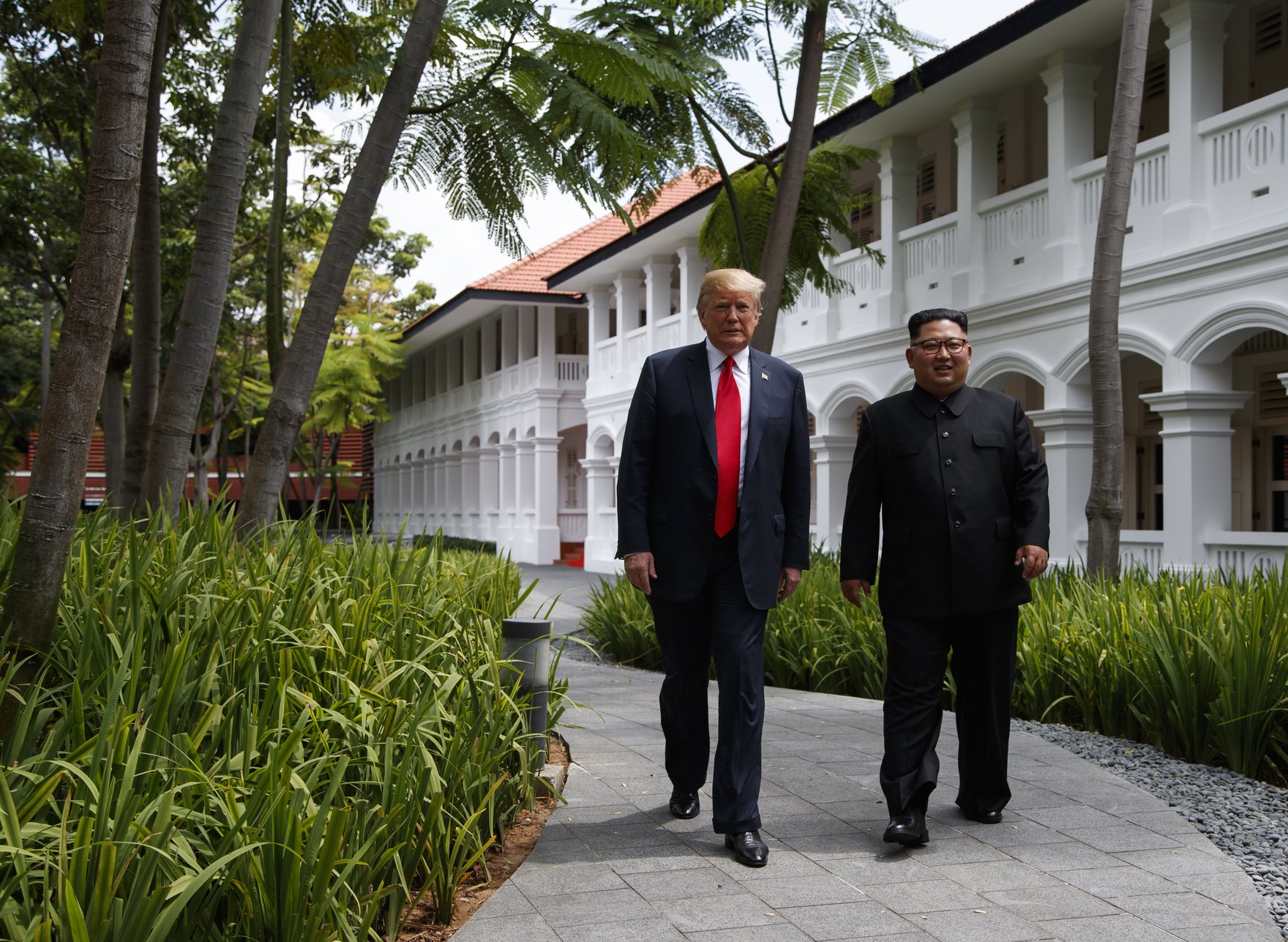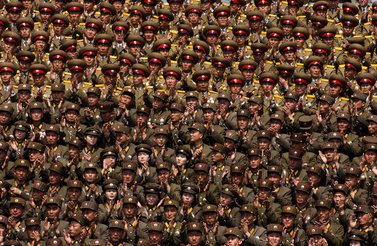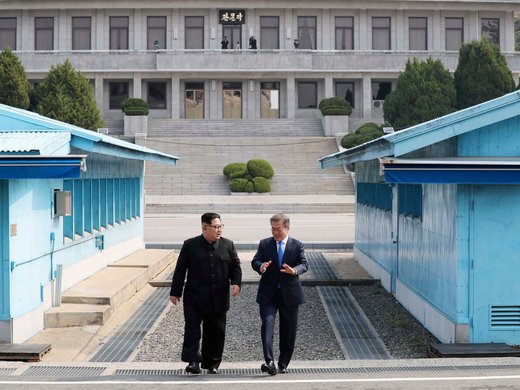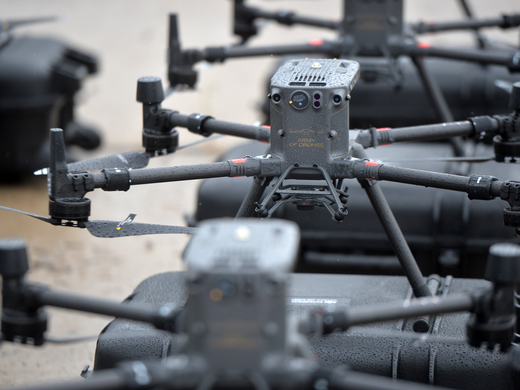North Korea is a seven-decades-old, nuclear-armed dynasty run by a third-generation tyrant, Kim Jong-un.
But, consumed with the overriding impulse to make history, US President Donald Trump shook hands with Kim in Singapore, playing right into his family regime’s 70-year history of post-provocation pageantry. In doing so, Trump has won some gripping optics of rapprochement, but at the cost of compromising US leverage and further enabling Kim to buy time for his nuclear programs.
After assiduously claiming that nothing short of the timely CVID (complete, verifiable, irreversible dismantlement) of Pyongyang’s nuclear programs would be acceptable, President Trump caved and settled for curiously little, while vigorously flattering the North Korean despot.
The “deliverables” from the summit are shoddy. The Trump-Kim joint statement is conspicuously devoid of meaning. The “verifiable” and “irreversible” elements of CVID were nowhere to be found in the joint statement, one of the two tangible products of the summit meeting (the other, a video montage of snapshots, clichés and self-parodies, is a subject for a separate exposition).
The statement contains no specifics. There is no mention of the suspension of plutonium reprocessing or uranium enrichment. Not a word about the International Atomic Energy Agency or monitoring. Key words such as “verification,” “safeguards” and “ballistic missiles” are absent. There is no timetable for any action to be taken by either side. No details for the devil to delight in.
Apart from the last item in a list of four brief points, which calls for the recovery of the remains of US prisoners of war and those missing in action (POW/MIA) during the Korean War, the statement gives three vague aspirational declamations on the amorphous and the unreachable. To summarize, point one: Let’s build “peace and prosperity.” Point two: Let’s build a “lasting and stable peace regime.” Point three: Let’s “work toward complete denuclearization.” Even point four on the remains of US POW/MIA is nothing new. The United States has raised the issue on countless previous occasions, and the Democratic People’s Republic of Korea has, without fail, ignored US entreaties
When asked at the post-summit press conference about human rights abuses in Kim’s kingdom, Trump intoned, “It is a rough situation over there.” Trump then immediately followed up with a crude generalization: “It’s rough in a lot of places.”
Quite the contrary. The North Korean tyrant is the world’s most qualified candidate for indictment by the International Criminal Court for crimes against humanity. According to a landmark 2014 United Nations study, Kim and his predecessors’ crimes against humanity do not “have any parallel in the contemporary world.”
Trump’s undignified remarks have set an ignoble precedent. When it comes to attempting, through artful diplomacy, to denuclearize a de facto nuclear bombs-possessing state that has not undergone a change in its leadership or political system, there is no precedent for success. When South Africa, Kazakhstan, Ukraine and Belarus relinquished the bomb, they had all been reborn — in political terms anyway — as children of the Renaissance: post-apartheid, post-Cold War and genuinely pro-engagement with the advanced nations of the world. Taiwan, Province of China, South Korea, Brazil and Libya were all in the nascent stages of nuclear programs and far away from acquiring the ultimate weapon.
For those who look to history for guidance, the outcomes of the Singapore summit were predictable.
In 2000, Kim Jong-il, the second-generation North Korean dictator and father of the current leader, came out of his hardened anti-social shell. As his son, Jong-un, is doing these days, Kim the Second lined up world leaders for a series of summit pageantries. As is Kim the Third’s scheme today, Kim Jong-il’s outreach was a crafty attempt to reset the geopolitical chessboard, transform himself into a globe-trotting statesman and shake down his expanded neighbourhood for extortion money with which to build better bombs.
From May to July, 2000, Kim Jong-il held summits with the leaders of China, South Korea, and Russia in succession. Vladimir Putin’s visit to Pyongyang in July, all but forgotten today, was the first-ever visit to North Korea by the top Russian (or Soviet) leader. It reflected Kim’s status as a bona fide nuclear aspirant in the post-Cold War era. Not even his own father, Kim Il-sung, the original Great Leader, had risen to such stature during his half-century rule.
An invitation to President Bill Clinton to visit Pyongayng followed in October. President Clinton, despite the risk in accepting the invitation, was keen on making history, much as Trump has been in recent months, including the days leading up to his historic moment in Singapore. Because of the day’s political climate, Clinton’s visit never materialized.
Today, the Kim dynasty continues the two-act play of provocations and post-provocation peace ploys. History is a guide. It must not be ignored.
Riding high on his victory in Singapore, Kim Jong-un will continue his outreach campaign, meeting with Vladimir Putin, Japanese Prime Minister Shinzo Abe and perhaps even speaking at the UN General Assembly Session in September, which will create the opportunity to meet with — and further soften —Trump. It’s likely that Kim will eventually visit China’s special economic zone, heralding a fake era of reform and thereby buying more time and money with which to pursue his real interests: the further building and weaponizing of his bombs and ballistic missiles. Ensnared into a protracted negotiation process, Trump will find it politically difficult to walk away and revive his “maximum pressure” campaign — a combination of the threat of the use of force, tough sanctions enforcement and diplomatic isolation.
For the Kim regime, it pays to provoke. And it pays even more to placate afterward. The Kim dynasty’s formidable military power, bizarre image and outlandish belligerence is highly effective in compelling its adversaries to put their guard down the moment it changes the tune. The regime’s weaponization of its own identity dates back to the 1970s. Founding leader Kim Il-sung would beguile foreign visitors by coming across as a reasonable, well-informed leader presiding over a small nation threatened by the United States. Kim Jong-il recycled this scheme with great success in the 2000s, and today Kim Jong-un is merely implementing the same Pyongyang playbook.
For Trump to lunge at the first opportunity to make history without knowledge of history was his first mistake. To show his cards prematurely, expressing his excitement and aspiration to win the Nobel Peace Prize, was his second mistake. But the biggest mistake of all was to meet Kim Jong-un. For Kim, co-starring in this epic Singapore reality show has reset the geopolitical table, compelled Trump to sign an agreement — hollow as it is — and empowered his neighbours to stop enforcing sanctions.
Indeed, the Singapore summit was historic, but for all the wrong reasons. In order to minimize the damage, an immediate resumption of maximum pressure is essential. Only through further enforcement of sanctions and diplomatic isolation will the Kim regime, under financial and psychological duress, be resigned to negotiate in good faith.




